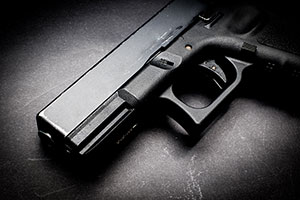Two firearms experts have testified that a man who is on trial for murder could have unintentionally pulled the trigger twice.
The Shooting
Duilio Antonio Rosales was a Juneau jeweler who was shot and killed in 2016 while on a hunting and fishing trip. Rosales suffered two shots to the back of his head while he was sitting down and removing his boots. His coworker, Mark Desimone, was charged with his first degree murder. Desimone claimed that the shooting was an accident. Another member of the trip, Seth Bradshaw, said that he heard the gunfire and thought that someone was target shooting. Bradshaw later ran into Desimone, who said, “ I shot him, I shot him. It’s all my fault, I shot him.”
The Trial
Desimone did not contest that he shot Rosales. His defense at trial was that the shooting was accidental.
The defense called Dr. Roger Enoka as an expert witness. Dr. Enoka testified via video call from Colorado. Enoka explained the different ways that a person could fire a gun unintentionally. These ways include if a shooter is startled or a sympathetic response. A sympathetic response occurs when one hand is doing something and the other hand wants to do the same thing. Enoka told the court about instances where an officer was detaining a subject with one hand and holding a gun in the other; sometimes when the non-armed hand closed into a fist, the hand holding the gun would automatically form a fist and pull the trigger.
The defense called Chad Kendrick, a firearms expert and owner of a gun and ammunition store, to testify on Desimone’s behalf. Kendrick used a revolver to demonstrate how he thought a person could end up firing two unintentional gunshots. Kendrick stated that a subject could fire accidentally and then the recoil of the gun could cause the subject to fire the gun again quickly. Kendrick demonstrated that a person might try to stop a gun as it recoils, but end up accidentally re-cocking the gun instead. Kendrick testified that if someone did fire unintentionally two times, it likely happened in extremely fast succession. This testimony fit with the testimony of a forensic pathologist, Dr. Todd Grey, who testified that the bullets likely went through Rosales’ head in quick succession because their paths were very similar.
The prosecution argued that firing a single-action revolver requires deliberate movements. Each time a person fires, he or she would have to cock the hammer and pull the trigger.
Assistant District Attorney Amy Paige called Debra Gillis, a forensic firearms and tool marks examiner for the Alaska Scientific Crime Detection Laboratory in Anchorage to testify in response to Kendrick’s demonstration. Gillis testified that the back-to-back unintentional gunshot theory was ridiculous. She said, “It’s rare to have an unintentional discharge in the first place…To have two in conjunction, I think, is very rare.”
The jury found Desimone guilty of first-degree murder. He faces a prison sentence ranging from 20 years to 99 years.




